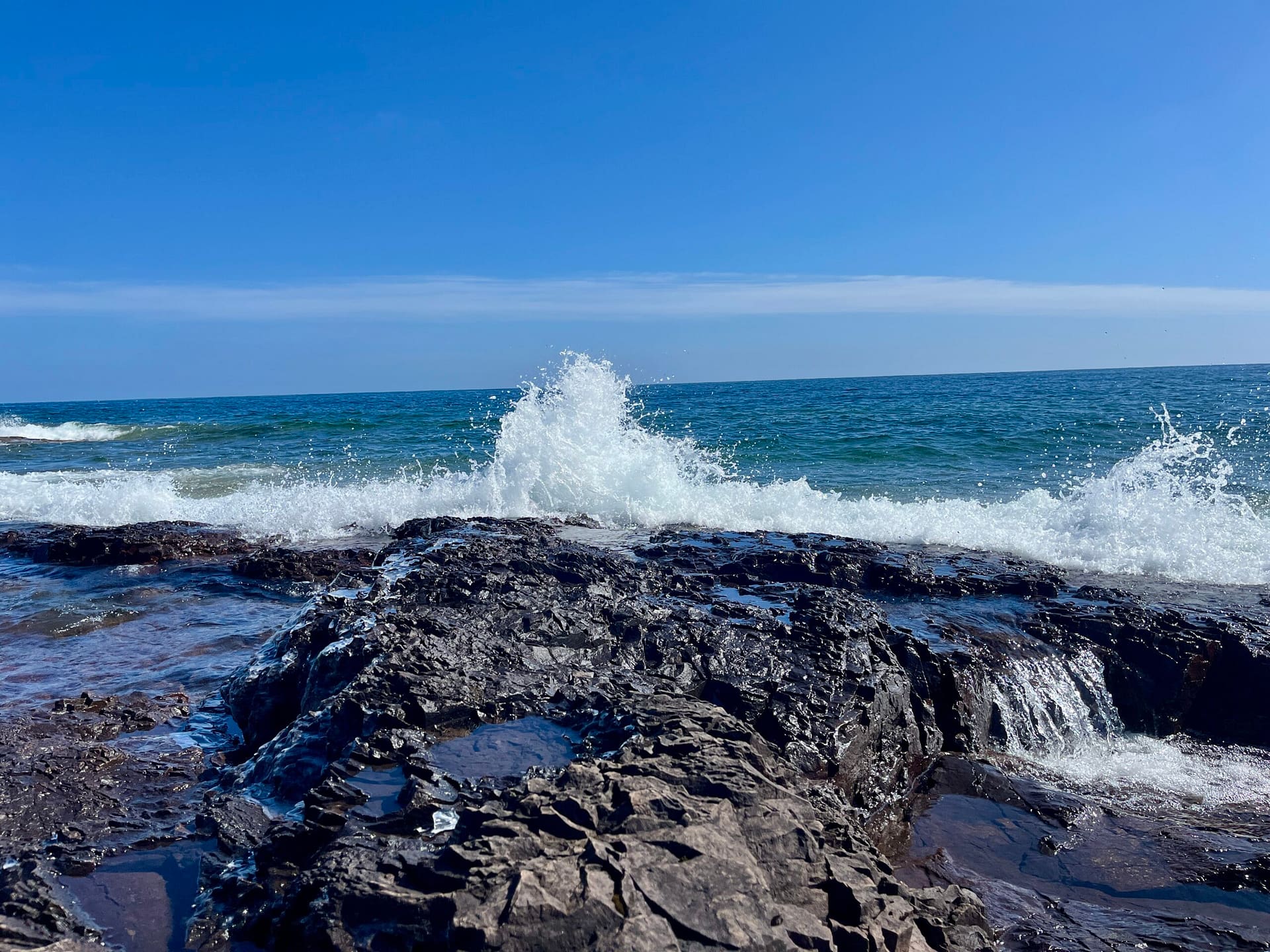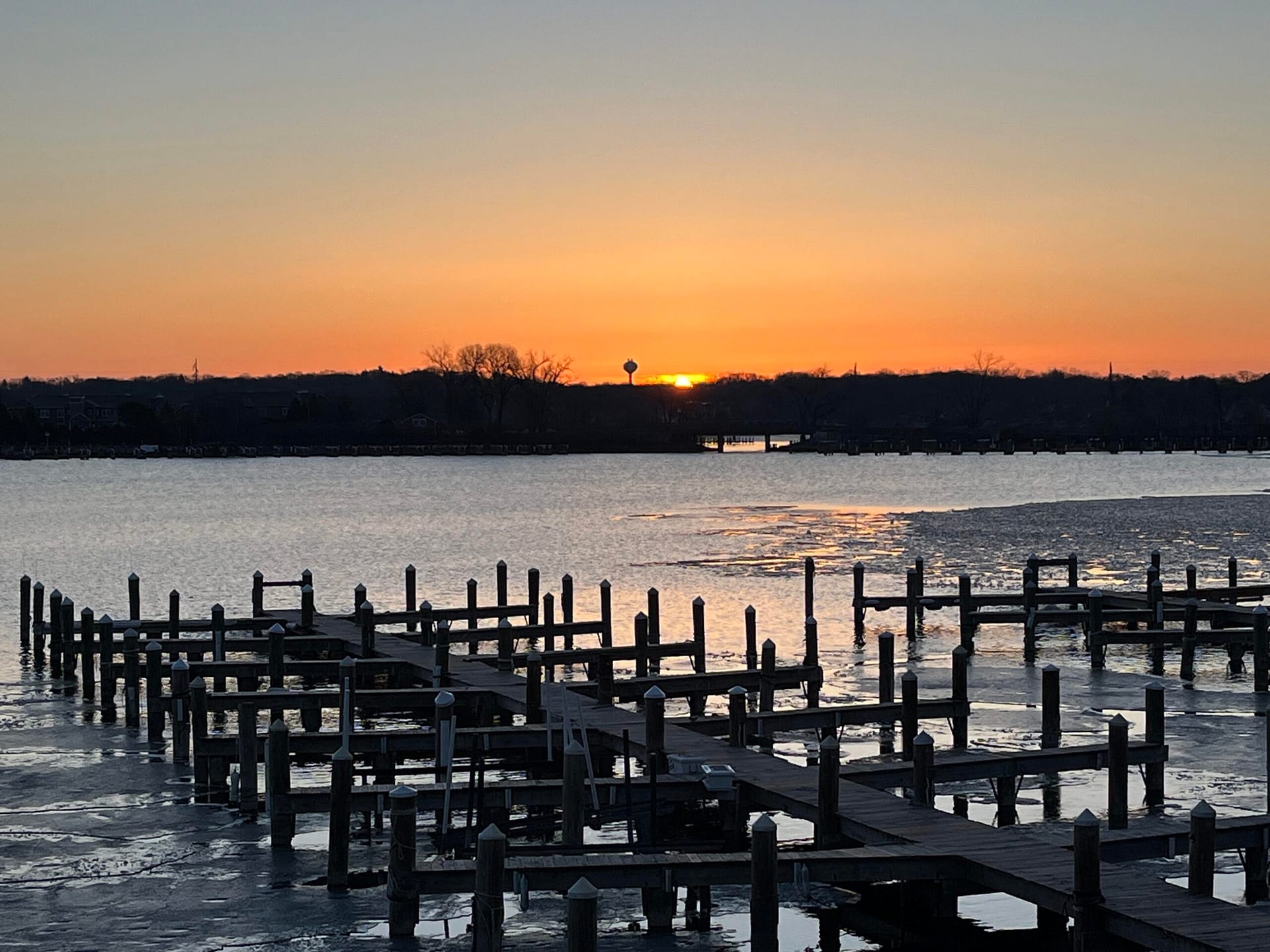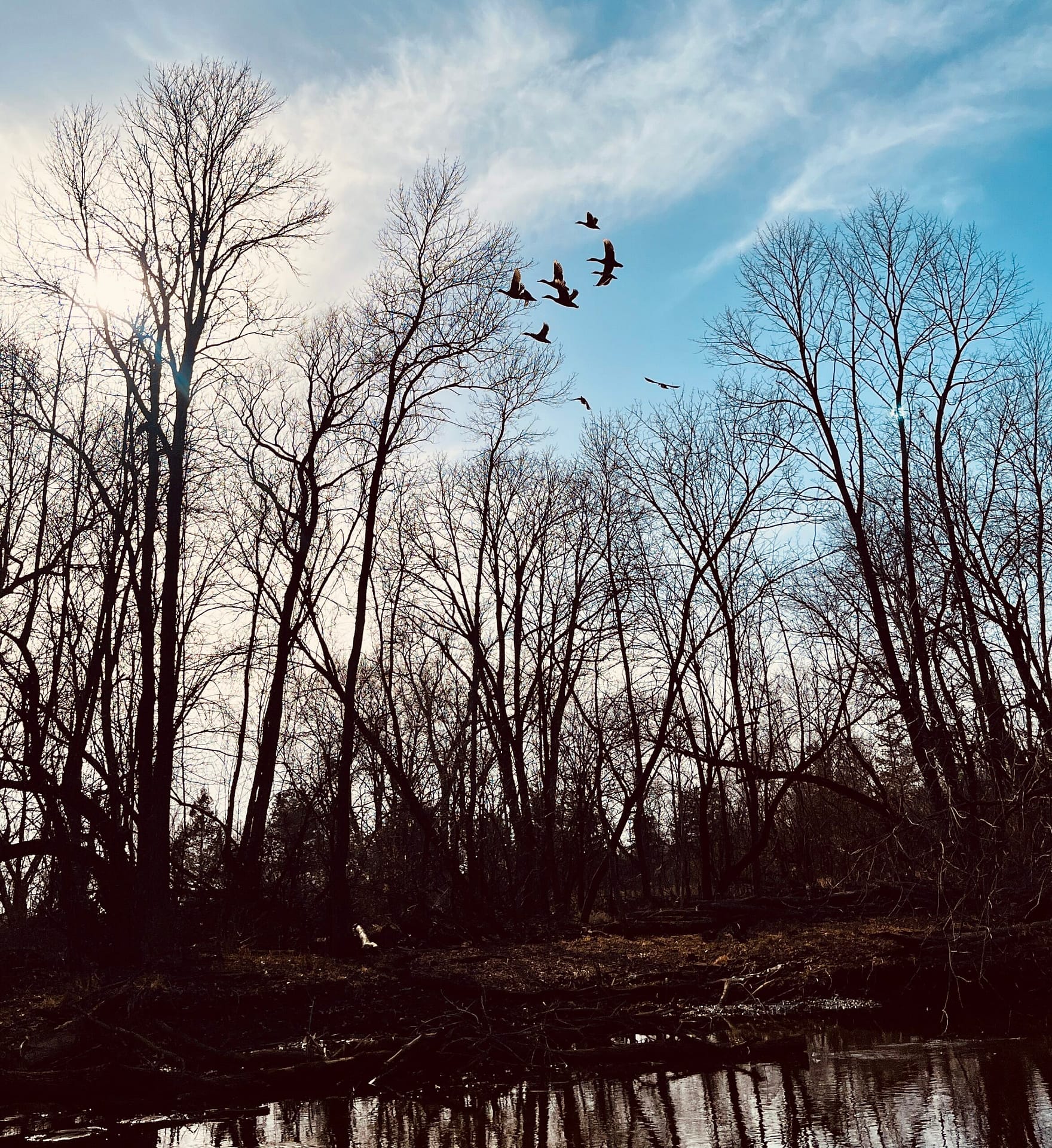“In seed time learn, in harvest teach, in winter enjoy.”
— William Blake, English poet
When winter weather sets in and it’s cold outside, maybe (probably) it’s time to discover the magic of winter in nature. This end-of-year season has me thinking back about some magical winter adventures I’ve had.
Here’s my advice (unsolicited as it is): enjoy the following excerpts about enjoying winter, then get outside and enjoy it for yourself. There is so much to do and so much to see during the cold months. Snowshoeing is my favorite winter activity. It gets me deeper into the woods where discovering winter magic is heightened.
I started snowshoeing many years ago. Already a winter-lover, it caused me to fall in love with winter even more. In fact, during late winter months, when the snow gets sticky (melting) and the snowshoeing isn’t very good anymore, I mourn the passing of winter.
In my mind, the trick to loving winter is to find some things to do outside you enjoy. The possibilities are endless. For now, enjoy the magic of winter through me!
How to Love Winter
Where I live, I sometimes hear people proclaim a strong dislike for winter. Some go so far as to use the word (gasp) “hate.”
I understand. It is cold, sometimes brutally so. Scraping ice off car windows. Shoveling. The trials of the frigid season. But hate winter? It offers so much beauty. Serenity. Opportunity.
I’ve come to believe the difference between embracing, dare I say loving, winter and enduring it is summed up in one word. Fun.
I realize not everyone can get outside for wintertime activities. For those who are able, however, it is the best way to enjoy the season. I like to ask winter-hating adults what they did during winter as a kid. Most have a list of snowy and icy things like skating, skiing, building forts, ice fishing, sledding, etc. Kids love winter. They have fun with it and play in the snow.
That is the answer. Be a kid again! Play in the snow! If you’re gonna live in it, why not make the best of it?
Many years ago, I started snowshoeing regularly. Something interesting happened: I found myself monitoring the quality of snow, especially in March. When it begins to warm up, snowshoeing is less enjoyable. The snow gets sticky and harder to move through. When patches of ground began to appear as the snow melted away, I didn’t find myself rejoicing at the passing of winter but mourning the passing of a season that provides me with what has become one of my favorite activities.
It is true I’ve always loved winter, but snowshoeing deepened my relationship with the season. Winter in the north is something to behold. The ability to snowshoe into the woods is something to cherish. It is a place of wonder during the cold months.
Searching the Winter Stars
Early in the morning, at dawn, I was outside. The sky was clear, and the air was cold. There was a honey-gold band across the horizon where the sun was getting ready to rise. A crack of color split the earth. A sliver of a moon hung above the treetops. The trees looked black against the lightening sky. Finger-like branches reached for the moon, a waning crescent moon.
Waning crescent is the moon phase that precedes a new moon. The illuminated, visible part gets smaller until it isn’t visible at all—new moon.
The crescent moon was beautiful, but it was the following phase that interested me. When the moon isn’t visible, lights in the sky appear brighter, like holes punched in a black blanket. The winter sky, often clear and void of haziness, can be great for stargazing.
The new moon arrived, and I decided to go outside pre-dawn and look at the constellations.
The first morning I went out was unkindly cold, eleven degrees below zero. I decided to go to a small local lake. I was there an hour and a half before dawn, the recommended time for pre-dawn stargazing. There were a few clouds hugging the horizon and what looked like a slight haze in the sky.
I walked onto the lake and looked up. The stars were brilliant. There were a couple of lights from houses in the distance, but they didn’t illuminate in the direction I hoped to see Taurus. I located the Dippers and turned to find Orion, which I did. I’m pretty sure I saw Taurus. Like I said, I am a novice, and there was a slight haze in the sky. I studied the stars and made mental notes of how I might do things differently the following morning. Also, the sky was forecasted to be clear.
That evening, I spent a brief time looking at the stars. Orion was bold, the first one to pop out. His belt (a row of three stars) was easy to see. His bow was a bit fainter but still visible to the naked eye.
The next morning, I got up early and checked the temperature before dressing to go outside. Twenty degrees below zero. Oof. While it was tempting to stay warm inside, I remembered the new moon, the clear sky, Taurus …
Driving down a road near a field north of town, the openness of the area offered a great view of the sky. Also, no lights were around to dim the brightness of stars. When I got out of my car and stepped onto the road, I looked up. It was mesmerizing—amazing! So many stars.
There they were—the Big Dipper, the Little Dipper, and Orion. I called them by name and felt as if I was taking roll call. When I looked for the hunter, he was camouflaged by so many stars! It was as if they had multiplied overnight.
Then I found Taurus and Orion amid the multitude of bright lights. It was cold outside, but the beautiful sky was worth it. Even during the long stretch of frigid weather, the universe offered something to marvel at, something to wonder about: stars.
Enjoying Winter Woods
After I put on my snowshoes, I trudged out to the woods. It was early in the morning. Pausing for a moment, I surveyed my surroundings. There was a small flock of birds high up in a hardwood, and they appeared to be playing a game of tag.
Do birds play tag? I’m not sure, but there was a lot of chirping going on as they went round and round the tree trunk. They looked as if they were having fun.
It was cold outside, about five degrees above zero. The snow was loud and crunchy, probably due to the warmer temps and drizzle the prior week. Nothing like a winter rain to ruin the snow. Still, my snowshoes worked well and kept me from slipping on ice.
The sky was gorgeous, and the clouds were like cotton. Not the ominous cotton ball clouds we see during summer on stormy days, more like cotton ropes. They were pale orange and lovely, decorating a periwinkle sky.
Due to the loud, crunchy snow, I had a little hope of seeing any critters, save some songbirds. They seemed to be in every direction, those birds, and calling, do you, do you, do you … I wondered what they were asking me. Do I what? I never asked; they never offered.
In the woods, I noticed the root systems of some fallen evergreens. On the portion of land that comes to a point on a pond, a sort of small peninsula, there were several downed trees. They were uprooted from a summer storm. I wondered about the root systems and how strong a wind it took to uproot them.
Walking on into some deep snow that got down into my boots, I decided it was time to head for home. It was still cold outside, and the sky was overcast. No sun was going to warm the world at my level. The clouds, still looking like cotton ropes, had turned from an orange hue to a very pale gray, almost white.
Walking past the uprooted trees again, I observed their condition once more. The dirt and rocks were still clumped in with the roots. Why hadn’t rain washed away the dirt, considering it had been about two and a half years since they fell?
Amid the fallen pines, I looked up at the many towering evergreens still standing. They made me think of victory and defeat, beginnings and endings.
With a brand-new year under way, I wondered about what might begin and what might end.
Perhaps it’s better not to wonder about the future; it’s better to simply take each day, each moment, as it comes and enjoy the world around me. Enjoy the trees—standing and fallen alike—and enjoy the cotton ball clouds and periwinkle sky.
Winter Solitude
I’ve been spending a lot of time in the woods lately. Winter woods. Here is one of the things that is lovely about being out, deep in the trees at different times of year: diversity. Variety in nature is why I love Minnesota; variety in each season is one of the reasons I enjoy the woods year-round. Winter woods offer some things warmer seasons do not (and vice versa).
This time of year, growing vegetation is missing, so the ability to see a significant distance through the trees is great. I like that. Sure, there is less to see as far as flora and fauna go, but there’s something about being amid the trees—bare hardwoods and evergreens—that offers a simplicity I love.
The other day, while exploring the woods and snow, I sometimes stopped to engage my senses. I like to do that. Whatever time of year, wherever I am outside (lake, field, forest… anywhere), I try to engage as many senses as I can. Winter offers little in the smell department. It is necessary to get close to things, like an evergreen sprig, to pick up a scent
There wasn’t much to hear, either. Throughout my walk, crows were constantly cawing. Also, the dead leaves hanging on oaks sometimes rustled in a breeze. That was about it.
I refrained from tasting anything (though I was tempted to eat some snow). It made me smile, though, thinking about all the snow I ate as a child. Kids don’t exercise the caution adults do when engaging with nature. Snow, plants, and mud seem to be potential edibles. That is a wonderful thing about children; they are naturally curious and adventuresome.
Of course, my most heightened senses were sight and touch. One of the first things I saw was that many of the trees were covered in lichen. After taking a close look at the green lichen, I decided to touch it. It felt sort of rubbery.
Lichens are a combination of algae and fungus. They grow on a variety of things, both living and dead. They can break down rocks, turning them into soil. The lichen I felt seemed so soft and harmless. Yet, it boasts power over rocks. Remarkable!
The lichen in the woods reminded me a little bit of moss. There was a time when I thought the two were related. However, other than a green hue, they have little in common. Moss is a simple plant; lichen is a more complex organism. It is a very diverse life form.
Lichens vary from one to the next, like snowflakes. That was the other thing I was able to enjoy by sight and touch: snow. It was falling very gently and in big flakes. Walking across an open area, I decided to lie down and look up. The snow was cascading to earth very, very slowly. It was lovely to watch.
While reclining, looking up at a gray, snowing sky, I had a strange sensation. The snow was mesmerizing, the woods were vast, and the outdoors were quiet. It took me some time to put the feeling into words, but I finally decided it was solitude, as if I didn’t belong anywhere and at the same time belonged everywhere.
It is hard to explain. It was a little bit melancholy and peaceful all at the same time.
Eventually I got up and resumed my woodland hike, venturing off the pond and back into the woods. It was growing dim outside, and I needed to head home. My woodland (and frozen pond) hike had been enjoyable. Even during winter, there is so much to see outside.
Winter Like a Bride
Last week was one of my fantastic nature experiences. On one very (very) cold morning, I was privileged to be up early and witnessed a sky where it seemed all the stars were out to greet me. Later that same day I went for a walk, and the snow was smooth and beautiful. Then two days later I went snowshoeing with a friend, and we saw an angel.
The starry morning showed off for me. A blanket of black with dazzling jewels. The predawn February sky also offers a look at some planets: Venus and Jupiter. I love it when the dark sky is clear of clouds and all the stars are visible.
When I went snowshoeing that same day, there was a fresh blanket of snow. It was untrod and looked like silk satin. You know, the sort of material that is commonly used to make wedding dresses. The snow cover was sprawled out on the pond like a giant piece of fabric. I stopped and stared at it for a long time, all sleek and glossy. It really was beautiful.
I didn’t stay out long on that snowshoeing adventure. The wind was raw. I stayed just long enough to admire the snow and watch the sun peek over the horizon.
My next snowshoeing event was accompanied by a friend on a trail at the Cuyuna Country State Recreation Area. We went up Sand Hog Mountain. It was quite a hike, but the weather and snow were perfect for the outing. Up on that mountain was where I saw the angel. As snowshoeing buddy Liz and I went up, up, up, there wasn’t much to see in the way of wildlife.
Despite the cold, I had thought there would be some critter sightings since not many people were out and about in the area. It wasn’t long after my musing that my friend and I saw (and heard) a Pileated Woodpecker.
Then out of nowhere some animal tracks appeared directly in front of us. We were following a snow-covered bike path, and the critter tracks began abruptly, as if the animal had fallen out of the sky. We decided it had to be a bird. Not far from where the tracks began, we came upon a beautiful snow angel. The wings of the angel looked as if they had been made by feathers. Was it the same bird that blazed the trail ahead of us?
As we walked on, the bird tracks continued, then veered off into the woods. It was a mystery. After a bit of time passed, we were startled by the sudden flap of wings and flight of a bird. It was a Ruffed Grouse. Of course! That was what made the tracks. That was what had made the beautiful snow angel. Mystery solved.
Outdoor encounters during such cold and quiet times of year cause me to feel grateful. That is exactly what I love about winter: life surprising me when so much outside seems lifeless.
Nature is a wonderful gift!


